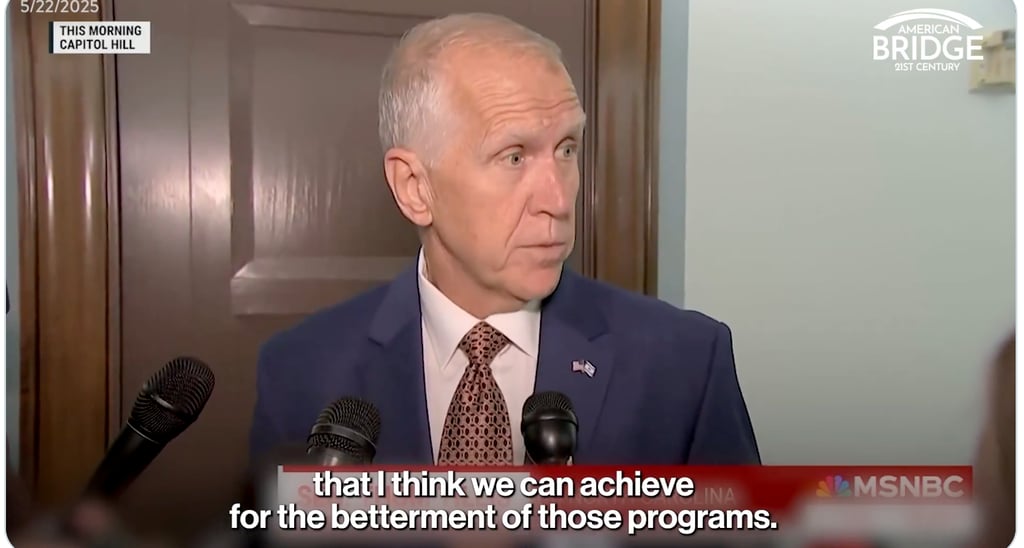Paul Ryan's Medicaid Stance: A Legacy of Controversy and Current Relevance
5/23/20254 min read


Paul Ryan's Medicaid Stance: A Legacy of Controversy and Current Relevance
Introduction
In a recent X post, former U.S. House Speaker Paul Ryan revisited the contentious issue of Medicaid cuts, a topic that has defined much of his political legacy. The video, shared by Boncopia.com, captures Ryan articulating a delicate balance: satisfying presidential objectives, ensuring no harm to qualified individuals, and achieving significant savings. This discussion is not just a blast from the past but a reflection of ongoing debates about healthcare policy, fiscal responsibility, and the role of government in social welfare. As we delve into Ryan's statements and their broader implications, we uncover a narrative that spans decades of policy-making, recent legislative proposals, and the enduring impact of his ideas.
The Historical Context
Paul Ryan's advocacy for converting Medicaid into a block grant program is well-documented. His budgets, such as "The Path to Prosperity" and "A Better Way," proposed significant reductions in federal Medicaid funding, arguing that states could manage the program more efficiently with fixed allocations. The 2013 analysis by the Center on Budget and Policy Priorities highlighted that Ryan's plan could cut Medicaid by nearly one-third by 2023, a move that critics argued would disproportionately affect vulnerable populations. This historical context is crucial because it frames Ryan's current comments within a long-standing ideological battle over the role of federal versus state control in healthcare.
Recent Developments
Fast forward to 2025, and the debate over Medicaid funding remains fierce. The House Budget Committee's recent advancement of a reconciliation bill underscores the continuity of these discussions. This bill proposes new work and verification requirements for Medicaid recipients and reduces the expansion match rate for states covering undocumented immigrants. These measures echo Ryan's earlier proposals, suggesting that his influence persists, even if indirectly, in shaping contemporary policy. Moreover, the Centers for Medicare & Medicaid Services (CMS) issued a proposed rule to close a perceived loophole in state financing of Medicaid, aiming to ensure that states contribute their fair share. This rule, if finalized, could save the federal government over $33 billion over five years, aligning with Ryan's emphasis on fiscal responsibility.
Ryan's Current Stance
In the X video, Ryan emphasizes the need to "satisfy the president's objective" while ensuring "no harm" to qualified individuals and achieving "billions of dollars of savings." This rhetoric is a tightrope walk, attempting to appease both fiscal conservatives and those concerned about the social safety net. His comments suggest a belief that Medicaid can be reformed without sacrificing its core mission, a stance that has been both praised for its ambition and criticized for its potential real-world impact. Ryan's current role with the American Idea Foundation, a non-profit focused on evidence-based policy solutions, indicates his continued engagement with these issues, albeit from outside the political arena.
Criticisms and Contradictions
Despite Ryan's efforts, his legacy is marred by criticisms of his policy impact. During his tenure, tax code revisions did not lead to the significant reductions in benefit programs that he envisioned. Medicaid spending continued to grow, and the program remained a federal-state partnership rather than a state-managed block grant. Critics argue that Ryan's proposals often underestimated the complexity of healthcare needs and the potential for states to underfund critical services. Moreover, his focus on fiscal austerity has been juxtaposed against the real-world consequences of reduced access to care, particularly for low-income and disabled populations.
The Broader Implications
Ryan's discussion of Medicaid cuts is part of a larger conversation about the future of healthcare in America. The tension between cost-cutting measures and the need to maintain a robust safety net is a recurring theme in policy debates. The recent reconciliation bill's provisions highlight the ongoing push to redefine eligibility and funding structures, raising questions about equity, access, and the role of work requirements in social programs. Ryan's emphasis on "no harm" to qualified individuals is a nod to these concerns, but it also underscores the challenge of implementing such reforms without unintended consequences.
Engaging the Reader
As we reflect on Paul Ryan's comments and their place in the broader healthcare policy landscape, several questions emerge. How can we balance fiscal responsibility with the need to protect vulnerable populations? Are block grants a viable solution to Medicaid's challenges, or do they risk exacerbating inequalities? And what role should evidence and data play in shaping these policies? These questions are not just academic; they are at the heart of ongoing legislative battles and the daily lives of millions of Americans.
Conclusion
Paul Ryan's recent comments on Medicaid cuts are a reminder of the enduring nature of these policy debates. His legacy, marked by ambitious proposals and significant controversies, continues to influence discussions about healthcare funding and reform. As we move forward, the challenge remains to find solutions that are both fiscally sound and socially just. The X video shared by Boncopia.com is not just a snapshot of a moment but a window into a larger story of policy, politics, and the quest for a better healthcare system.
Thought Questions
How do you think Paul Ryan's historical proposals for Medicaid block grants compare to the current legislative efforts in 2025?
What are the potential risks and benefits of implementing work requirements for Medicaid recipients?
How can policymakers ensure that healthcare reforms do not disproportionately harm vulnerable populations?
What role should non-partisan organizations like the American Idea Foundation play in shaping healthcare policy?
hello@boncopia.com
+13286036419
© 2025. All rights reserved.